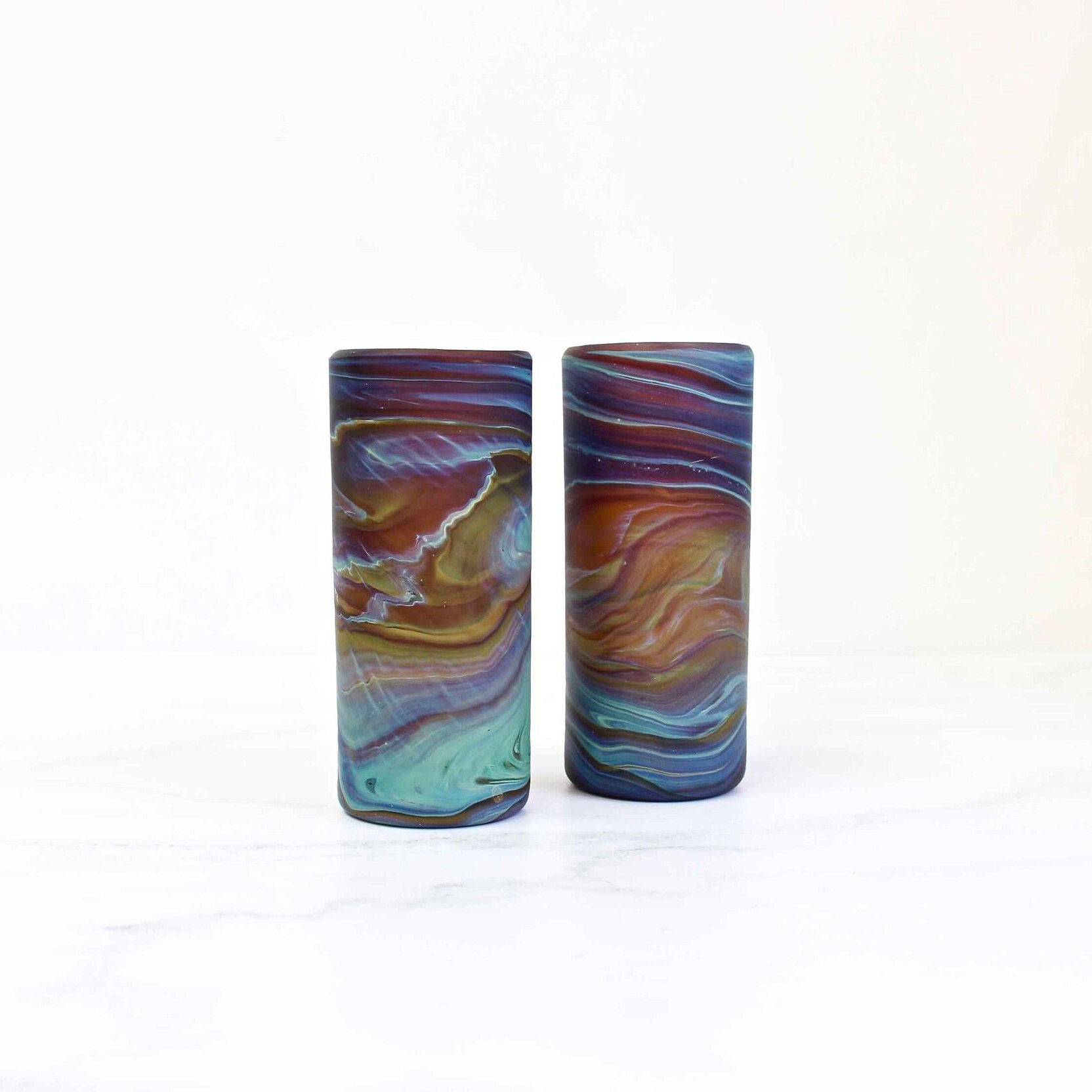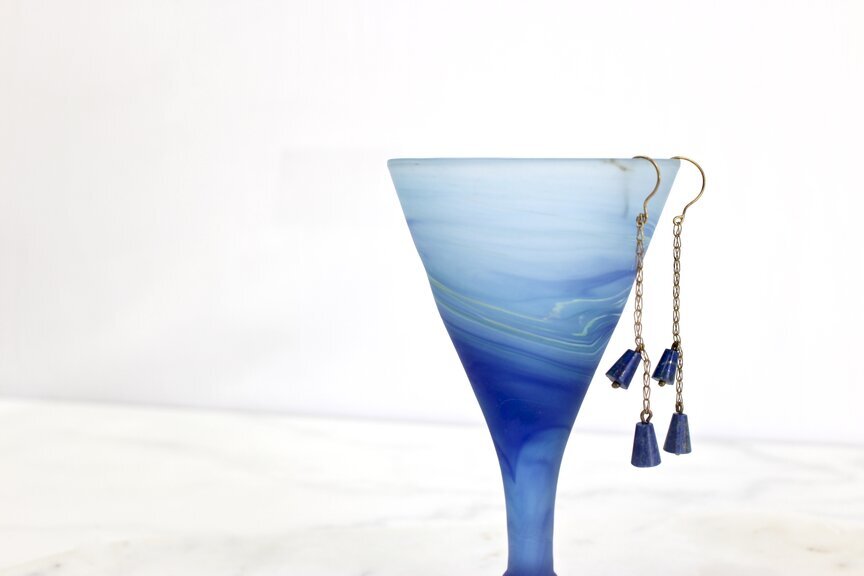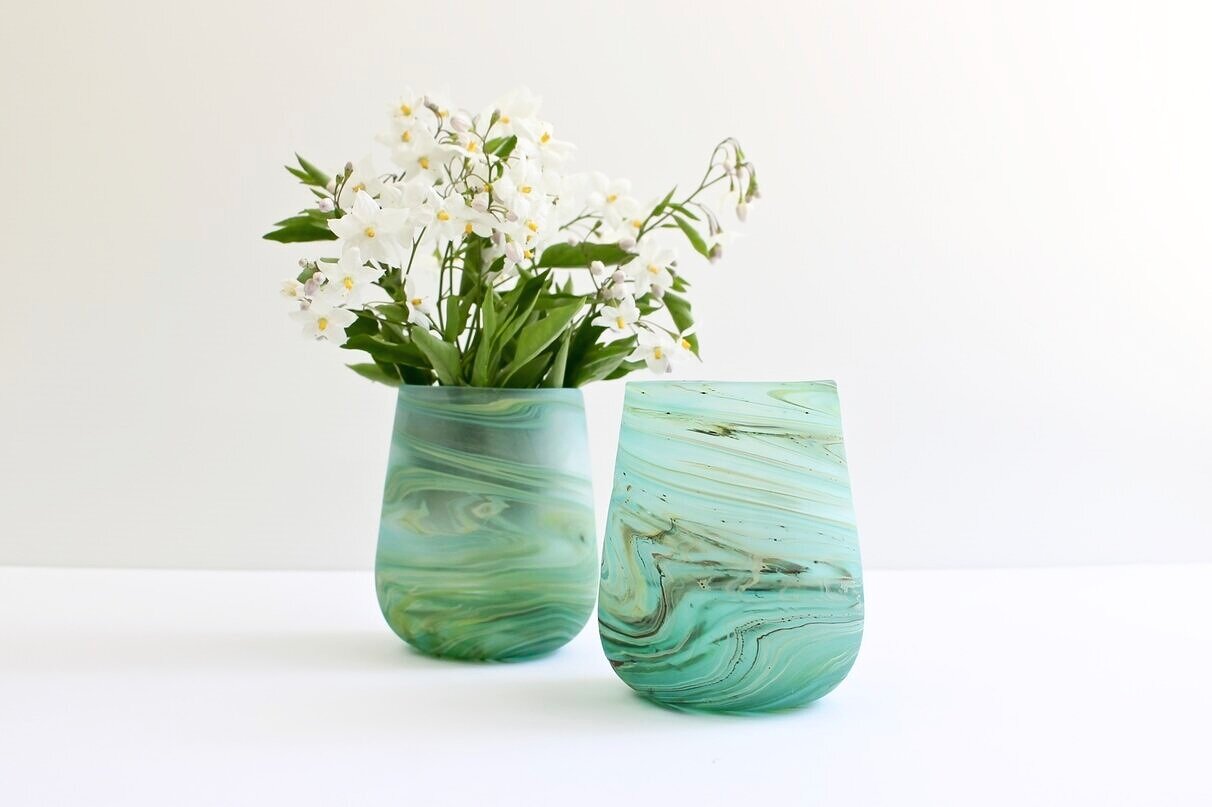Product Detail: Hebron Glass
Recycled Glass
A History of Glass Blowing
As beautiful and functional manmade items go glass is magical stuff. Solid, transparent, colourful, hard enough to protect us yet also fragile. When you look at a glass object, you might never guess that it was once a hot, flowing liquid that could be inflated or moulded or swirled into almost any shape.
Glass in its many forms has become an essential item in our lives. Made from natural materials it's inexpensive to make, easy to shape when it's molten, reasonably resistant to heat when it's set, chemically inert (so a glass jar doesn't react with the things you put inside it), and is infinitely recyclable (more on it’s sustainability later in the piece).
The earliest recorded use of glass was by the Egyptians who used it to glaze tiles, make figures and create beads which became a form of currency, and also prized for their beauty.
Around 50 B.C.E. glassblowing as a technique was developed along the Syrian-Palestinian border and has been a craft that has been practiced there ever since. This new glassblowing technique allowed glassmakers to produce vessels much more quickly than existing glass making practice and when it was picked up in later years by the Roman Empire this provided a further catalyst for the production of glass by this method. The resulting increased demand for blown glass products saw their prevalence in both luxury items as well as those for every day use, replacing many clay products.
The Phoenicians set up the first glass workshops on the eastern borders of the Empire, in the birthplace of glassblowing in contemporary Lebanon, Israel and Palestine. This technique of glassblowing has been used for over 2000 years, and over this period, has undergone several transformations in order to manufacture some of the finest artworks that have ever been produced.
Free-Blown Glass
A technique honed and handed down the generations of Hebron artisans creating functional products that are also pieces of art.
Methods of Glass Blowing
A full range of glassblowing techniques was developed within decades of its invention. Before the invention of the metal blowpipes, the ancient glassworkers made clay blowpipes, also known as mouth blowers, due to the accessibility and availability of the resources.
Two major methods of glassblowing are free-blowing and mould-blowing. Free-blowing technique held very important position in glass-forming ever since its introduction in the middle of the 1st century BC until the late 19th century and is still widely used nowadays. Not unlike the glass worker of old, the modern day glassblower dips his pipe into the vat of molten glass and draws forth a gob of yellow, glowing glass, and using ancient tools, creates an expression of his talent. Mould-blowing was an alternate glassblowing technique that came after the invention of the free-blowing method. This tools and techniques have changed very little over the centuries.
The Artisans of Hebron
At Hebron Glass based on the West Bank of Palestine, the craft of glassblowing has been handed down from father to son, master to apprentice over centuries. From its very beginning, the formulas and procedures used in their unique glassblowing technique have been kept secret, held by only a few Palestinian families. Here different coloured glass intermingle and flow together in entirely unique patterns, creating glassware products that luminescently beautiful one-of-a kind pieces of art.
Over centuries the glass producers in Hebron have been one of the main employers and sources of income for Palestinians. However, due to the Israeli-Palestinian conflict glass sales and hence production has suffered a decline due to limited tourism and highly restricted access to shipping methods. Nonetheless, it is exporting of their glass products that has been the lifeline to keep both the industry and traditional skills alive. Thus helping to bring jobs and economic development to rural areas which otherwise have sparse opportunities in the West Bank.
Is Recycled Glass Sustainable?
Hebron glass was traditionally produced using sand from the village of Bani Na'im, east of Hebron, and sodium carbonate taken from the Dead Sea. While technically being abundant raw natural materials they are not rapidly renewable - it takes millions of years to make the silica sand fine enough for glass making. You might be surprised to learn that sand, predominately from riverbeds and beaches, is the second most consumed natural resource on the planet, besides water. The negative impact on land and communities has been huge. There is even a black market in sand!
Nowadays in the interests of sustainability, both for the planet and for the people of Hebron, glass products here are now made by recycling glass. While reusing an item will always be the most sustainable choice, as every product requires energy to make it and transportation to get it to it’s end point, glass’s high recycling credentials make it a more sustainable choice than other materials. Moreover, recycling glass conserves natural materials and requires lower temperatures than melting virgin glass, using up to 40% less energy.
The environmental impact of glass, like other products, diminishes the longer you use it. Our recycled glass tumblers are designed to be reused over and over again, in multiple ways. As tumblers for water, whisky, wine or whatever takes your fancy, as candleholders to really capture the wonderful swirls in the glass or as a vase for petite posies. Great ethically made, environmentally conscious products for everyday use.







